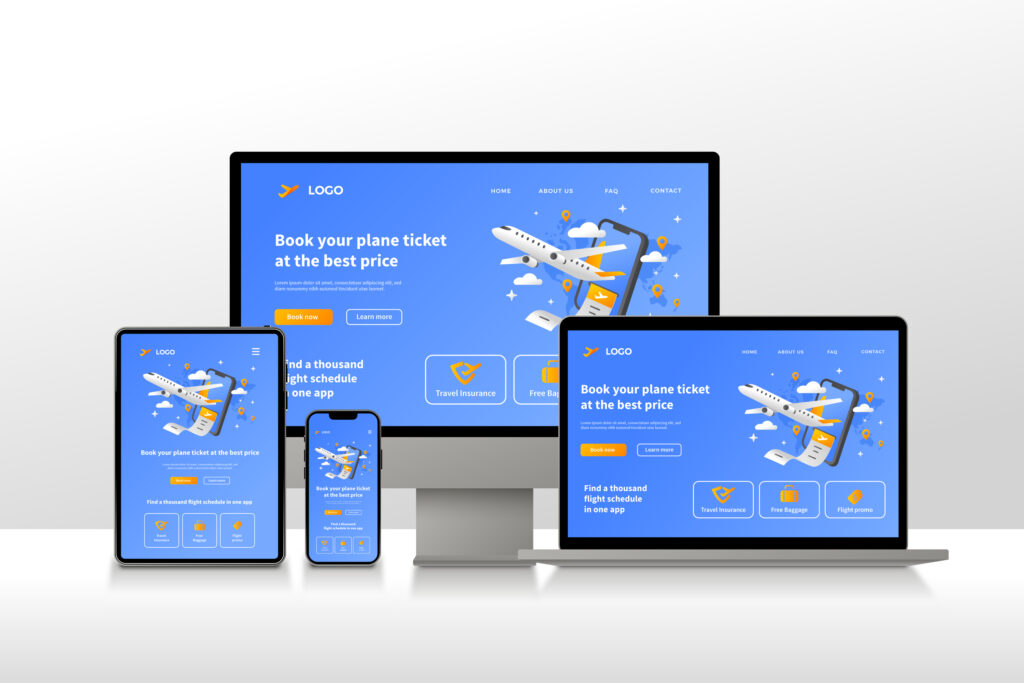
Your website is often the first interaction someone has with your brand. It’s where potential customers learn who you are, what you offer, and why they should choose you. But building a website that truly works goes far beyond having a modern design or a clever tagline. It’s about crafting an experience that captures attention, builds trust, and drives action.
Let’s break down what it really takes to create a website that delivers results.
1. Website Development Is More Than Just Coding
At its core, website development is about building an experience, not just writing lines of code. It’s the blend of design, functionality, performance, and strategy that brings your site to life. A successful website is:
- Visually appealing but also functional
- Easy to navigate yet rich in content
- Fast-loading, mobile-friendly, and built to convert
This holistic approach might sound overwhelming, especially if you don’t have a dedicated team. But with the right process, any business can develop a high-performing site.
2. Know Your Audience First
Before you build anything, you need to understand who you’re building it for. Ask yourself:
- Who is your ideal visitor?
- What do they care about?
- What problems are they trying to solve?
The best websites are designed with the user in mind. When you know your audience, you can craft content, design elements, and features that resonate with them. A site that anticipates user needs keeps people engaged and turns visits into conversions.
3. Plan Your Website Structure
Once you know your audience, the next step is to create a logical site structure. A clear sitemap helps:
- Users find information easily
- Search engines crawl and index your pages
- Your content stay organized as your site grows
Start by mapping out your core pages (Home, About, Services, Contact, etc.) and how they relate to each other. Good navigation helps users feel in control and makes your site easier to use.
4. Design with Purpose
Great design does more than look good—it leads people where you want them to go. Keep in mind:
- Use clean, simple layouts
- Make calls-to-action (CTAs) obvious and consistent
- Align your color scheme, fonts, and visuals with your brand identity
Visitors should be able to land on any page and instantly understand what you do and how to take the next step—whether that’s booking a call, buying a product, or reading more.
5. Focus on Functionality and Speed
Even the best-looking site will fall flat if it doesn’t work properly. Make sure your website:
- Loads quickly (especially on mobile)
- Works across all major devices and browsers
- Has working forms, links, and buttons
More than 50% of web traffic comes from mobile devices, so mobile responsiveness isn’t optional—it’s essential. And remember, slow websites not only frustrate users but also hurt your SEO.
6. Optimize for SEO from the Start
Your website won’t deliver results if no one can find it. That’s where Search Engine Optimization (SEO) comes in. Basic on-page SEO should include:
- Relevant keywords in headings, titles, and body copy
- Optimized meta tags and descriptions
- Descriptive image alt text
- Fast-loading, mobile-friendly pages
Creating quality content that answers your audience’s questions is also a major SEO driver. Google rewards relevance and value.
7. Keep Improving with Analytics
Once your site is live, your job isn’t done. A website is a living part of your business, and it needs ongoing updates to stay effective.
- Use tools like Google Analytics or Hotjar to:
- Monitor how users interact with your site
- Identify where people drop off
- Test improvements and updates
By regularly reviewing your data, you can fine-tune your design, messaging, and user flows for better performance.
8. Don’t Ignore Website Security
A secure site builds trust—and protects your business. Prioritize:
- HTTPS encryption (SSL certificate)
- Regular updates to plugins and platforms
- Firewall and malware protection
A secure website not only safeguards your data but also improves your credibility in the eyes of visitors and search engines alike.
Building a website that works isn’t about following trends—it’s about understanding your audience and creating a fast, functional, and engaging experience that helps them take action. When done right, your website becomes one of your most powerful business assets.
Ready to level up your site?
Let’s build a website that works for you—book a free consultation at BoznG and see how we can help.